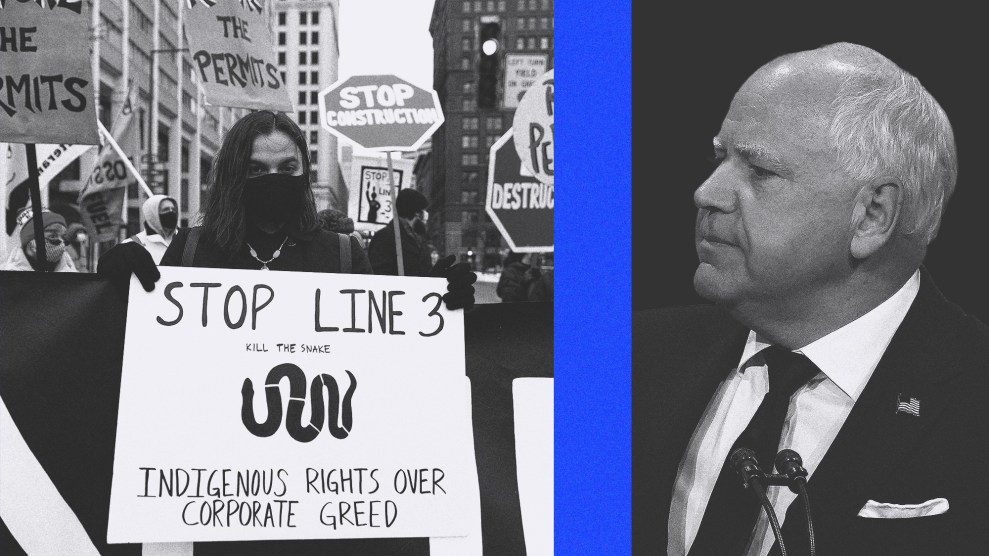
[Note for TomDispatch readers: As has been the case about once a week for the last month, this piece is accompanied by a podcast interview with the author. These podcasts are the first venture made possible by reader contributions to the site. This week, thanks again to you, we just committed some money for the first time to a writer who needed travel expenses to cover a story for us. This is a real luxury. But I realize that, much as I want to thank each reader who has clicked on the new “Resist Empire, Support TomDispatch” button and contributed, I haven’t done so. The truth is: I need about three more hours in my day (or three less hours of sleep). In any case, I hope you know that this doesn’t mean we here at TD aren’t deeply appreciative. Believe me, we are—I am. In the meantime, please take this as a modest collective thank you!]
Recently, TomDispatch launched a series of pieces aimed at the coming Obama era. Michael Klare wrote on the new president’s “energy challenge of a lifetime”; I explored his future arrival in “airless Washington”; and today, John Feffer, co-director of the Foreign Policy In Focus website and a Korea expert, considers the thorny issue of American policy toward North Korea.
As Glenn Kessler of the Washington Post recently wrote, “On North Korea, Obama will inherit a process that is probably in worse shape than what Clinton left for Bush.” Who can question this, given that the North has now actually tested a nuclear weapon and declared itself a nuclear power?
When queried during the campaign on his attitude toward the latest agreement on verifying the partial rollback of the North Korean nuclear program, Obama’s response, peppered with run of the mill American threats, seemed only marginally different from that of the Bush administration. “If North Korea refuses to permit robust verification,” he answered, “we should lead all members of the Six-Party Talks in suspending energy assistance, re-imposing sanctions that have recently been waived, and considering new restrictions. Our objective remains the complete and verifiable elimination of North Korea’s nuclear weapons program… The Six Party Talks offer North Korea a clear choice. If North Korea abandons its nuclear weapons programs, there will be meaningful incentives. If it refuses, it faces a future of political and economic isolation.”
This was, of course, campaign rhetoric, and the campaign season is invariably a time when all Democrats must seem tougher than titanium on foreign policy issues. But campaign rhetoric has an eerie way of turning into policy, especially for a new Democratic administration which will undoubtedly feel a similar need to seem tough on “security issues.” It’s often suggested that Kim Jong Il’s country is locked in a time warp. That might turn out to be a better description, as Feffer suggests, of American policy toward that country. As a key prerequisite for a genuinely new approach to the North, the Obama administration should start, he concludes, by suspending the givens of the last 12 years and simply trying to see that country in a new way. (While you’re at it, check out a podcast interview with Feffer on the look of the new North Korea by clicking here.) Tom
The North Korean Conundrum
Change You Can Believe In or Policy Status Quo?
By John Feffer
As Barack Obama assembles his foreign policy team, he appears to be drawing from two primary sources: the Clinton faithful and Republican renegades. These old dogs might be up for some new tricks, but one risk of relying on such “experience” could be the triumph of conventional thinking in Washington—when the world expects, and the times demand, fundamental change.
These foreign policy mandarins will certainly counsel a tempering of the worst excesses of the Bush administration legacy—on torture, global warming, and adherence to international treaties. By asking what the elder Bush’s National Security Advisor Brent Scowcroft would do, the Obama administration will at least restore a modicum of realism to the hard-edged fantasy world of the George W. Bush years. At least, we’ll be back in the realm of the geopolitical chessboard after eight years of Grand Theft Auto.
But if we withdraw troops from Iraq only to send them to Afghanistan, approve free-trade agreements with only minor tweaks, and address global warming with quarter-measures, we will also find ourselves slouching toward what I’ve termed a Goldilocks apocalypse. Not too cold and not too hot might please the palate, but in the end we’ll end up in the belly of the bear.
Consider the risks of the policy status quo in the case of just one nation: North Korea. For the last seven years, the Bush administration wavered between two options in its policy planning for a country that the President famously labeled a member of his “axis of evil” in his 2002 State of the Union address. During George W. Bush’s first term, the ascendant hardliners in his administration rejected President Bill Clinton’s efforts to negotiate with that country, favoring instead pushing North Korea until its regime collapsed—which, of course, it didn’t. In his second term, the State Department got the upper hand with a plan to end North Korea’s nuclear program through multi-party negotiations.
Neither of these policy approaches proved sufficient. Largely because it would unleash millions of refugees on surrounding countries and who knows how much loose nuclear material on the world, regime collapse proved an unappetizing option not only in the region, but in Washington, at least for all but the most militant neoconservative policymakers.
The alternative—what might be called “the nonproliferation imperative” aimed at negotiating the North Koreans down from their stance as a nuclear power—was admirable in theory. Unfortunately, focusing only on the single question of whether or not North Korea would give up its nuclear program produced an insoluble dilemma. North Korea quickly grasped a single reality highlighted by Washington: when it came to both bargaining chips and deterrents, nuclear weapons were all it had. As a result, getting Kim Jong Il’s regime to hand over those last scraps of nuclear material is turning out to be like persuading a surrounded and desperate bank robber to relinquish his last hostages.
If there is one thing the Obama administration needs to do, it is to widen the American lens when it comes to North Korea. It should reframe U.S. policy by pursuing nonproliferation goals through regime change. Here’s the rub: That doesn’t mean pushing for a North Korean collapse or brandishing military threats. If the new administration wants change everyone can believe in, it must first recognize, and then leverage, the change that North Korea has already embarked on and American officials have largely ignored.
Change in the Air
Forget the picture you have of a land that time forgot. North Korea is not the world’s last Stalinist country or the only remaining communist economy. Not anymore, anyway. The country is very different than it was even a decade ago. For one thing, North Korea is now thoroughly permeated by a spreading market economy.
Take for example, the Tongil market in Pyongyang, which attracts thousands of shoppers every day, and is one of 19 markets in the capital city that sell everything from food to VCRs. Each North Korean city has between two and four markets. According to North Korean sources, citizens rely on the markets for approximately 20% of their staples as well as 50% percent of their fruits and vegetables, while other sources suggest that as many as 60-70% of North Koreans trade part-time or full-time in such markets.
These are not the only signs of independent economic activity. Kiosks offer a wide variety of foods as well as services like photo-taking. Private restaurants have mushroomed. On the illegal housing market (largely ignored by the government), North Koreans now buy and sell apartments.
A recurrent food crisis has certainly limited market expansion in some ways. Over the summer, the UN World Food Program reported that three-quarters of all households have had to reduce their food intake. Patronage has dropped at restaurants that don’t rely on the tourist trade, while consumption in general has declined. Nevertheless, the market now looks like an irreversible fact of North Korean life.
The government has largely played catch-up when it comes to these changes in the everyday economic fabric of the country. It has taxed market activity and attempted to regulate who sells goods in order to ensure that the young and able-bodied continue to show up at their designated state jobs. But it has also implemented market-oriented economic changes from the top.
After all, the North Korean government no longer has any ideological problems with market economies per se, either locally or globally. It has instead created what it euphemistically calls “real-gain socialism” and has endorsed the vague but distinctly capitalist principle of “selling what is present and buying what is missing.” In both cases, the primary concern of the central authorities, as in China, is to maintain political control, while ensuring that the ongoing market transformation yields a portion of its value to the government.
To the extent that these changes have been noticed in our American world, attention has mainly been devoted to the government’s old 2002 economic and financial reforms, which adjusted wages and prices, massaged the exchange rate, expanded private garden plots, and somewhat decentralized authority in the agricultural and industrial sectors. Although the North Korean economy did grow modestly from 2002 through 2005, the reforms generated a variety of problems. Economists are notoriously fallible creatures—just look at the crowd in charge of U.S. policy over the last seven years—and North Korean officials haven’t exactly been operating in an information-rich environment.
Pyongyang also found itself in the unenviable position of attempting to implement capitalism without capital. There simply hasn’t been enough money to modernize its factories and farms. While individuals avail themselves of markets and the government continues to pass laws to prepare for more foreign investment, agricultural and industrial enterprises are still forced to barter goods among themselves.
Without an accompanying rise in productive output, wage and price increases have led to inflation. The opportunities in the new economy to make money have produced a nouveau riche class and a widening income gap. Economic change has indeed come to North Korea, but in many respects it is a red capitalism: red in tooth and claw.
{publish-page-break}
Beyond the Economy
Even if the North Korean state aspires to totalitarian control over its citizenry, these days it has difficulty generating even a modicum of fealty from them. During the starvation years of the 1990s, the state largely abdicated its responsibility to provide for most North Koreans. The food distribution system collapsed. Factories stopped working. Food-poor border regions negotiated their own deals with China. Even soldiers could no longer rely on food distribution and so took to raiding farms. The paternalistic bonds between state and citizen, between state and county, between state and military began to melt away.
At the same time, the barriers between citizens and the outside world have become a great deal more porous. During the food crisis years, hundreds of thousands of North Koreans traveled to China and back in order to procure food for themselves and their families. They discovered that the giant neighbor they had always thought of as backward was in fact staggeringly far ahead of North Korea economically.
Perhaps realizing the effect this flow of information was having, the North Korean government aired footage of leader Kim Jong Il’s celebrated visit to Shanghai in January 2001, featuring visits to thriving factories and the Pudong stock exchange, as well as views of the material wealth enjoyed by ordinary Chinese workers.
Today, it is possible for North Koreans to acquire on the sly videos, songs, and books from South Korea. The North Korean government has reportedly cracked down on South Korean-style haircuts and slang—probably picked up from watching South Korean TV dramas on bootleg videos—all signs of the growing popularity of the world across the North’s borders.
No less importantly, the market has shaken up previously rigid social hierarchies. One’s place in the pecking order was once determined by proximity to the leadership, distance from a compromising past, or ability to work in strategic industries. With a money economy now shaping a new social hierarchy, however, it is not uncommon for former untouchables to pull together a bit of capital and rise through the new economic ranks.
The North Korean elite, too, has changed over the last decade. Knowledge of English has become a desirable asset. Travel and market training have become indispensable. The rich have enough disposable income to buy luxury goods from China.
The international media, when not writing about the North’s nuclear program, has focused largely on the health of Kim Jong Il and the identity of his potential successor. In doing so, like officials in Bush’s Washington, it has missed the larger story of an impending generational change. A younger group of officials have moved into important economic advisory positions around Kim Jong Il. At the same time, the ruling Politburo and military councils remain top-heavy with the old guard, once nurtured by the Dear Leader’s father Kim Il Sung.
In a capital-rich environment, there would be less likelihood of a major conflict between the new technocratic elite concentrated in the economic sphere and the old guard in the military councils. The Chinese government avoided this conflict by giving the People’s Liberation Army a major stake in the country’s economic reforms. There, the rising economic tide then lifted both boats.
The North Korean government has, in fact, made tentative moves in this direction as when, for instance, Kim Jong Il urged the military to establish “sideline industries” to provide for soldiers. But in a situation of limited resources, the military and the technocrats must fight each other for scraps. Unless the technocrats can prove that they are rainmakers, that their reforms will bring in needed capital—a distinct challenge in the rapidly worsening global economic climate—they are likely to lose out to the military every time.
Learning from Beijing and Seoul
If the Obama administration proves capable of looking at North Korea with new eyes, it will see that economic engagement with the country is likely to encourage all these important, if still nascent, changes. The impulse should not be seen as charitable. Over the last eight years, South Korea has already garnered an estimated $27 billion in benefits from its economic relations with the North, through trade, tourism, and particularly the Kaesong Industrial zone that now employs over 30,000 North Koreans in an area just north of the Demilitarized Zone that separates the two halves of the Korean peninsula.
China, too, has been quietly engaging North Korea for its own purposes. It has invested tens of millions of dollars in improving North Korea’s extraction industries—for instance, negotiating a 50-year lease to mine iron ore in the county of Musan—and improving access to the port of Rajin. Even Russia is getting in on the ground floor of what ultimately may be a profound economic surge in Northeast Asia, inking a recent energy deal with South Korea for a natural gas pipeline that will pass through the North as well.
The United States will never reap the same kind of economic rewards. We are too far away, and 23 million North Koreans are not a sufficiently tempting market for most U.S. businesses. But the Obama administration can realize other goals by opening up the spigot of development dollars going to North Korea.
Modest-sized targeted investments—in high-tech ventures and infrastructure development—can simultaneously boost the political fortunes of technocrats in the North Korean government and provide more opportunities for a middle class to emerge, helping soften the tooth and claw nature of economic reform there.
Such investments can help the regime change itself, just as foreign engagement helped the Chinese exit the insanities of the Cultural Revolution. To the objection—and the neocons and conservatives will be screaming about this, if Washington policy begins to change—that such money will only end up in the North Korean military, so be it. The North Korean military, like the People’s Liberation Army before it, must have a stake in any movement for reform, or it won’t ever come to fruition. It should, in fact, be encouraged to create its own non-military enterprises and become “gloriously rich” the Chinese way.
As for the goal of non-proliferation, the truth is: North Korea will only give up its nuclear program when it no longer serves as a crucial bargaining chip and a deterrent. Economic incentives alone will not accomplish this task either.
We can’t simply buy North Korea’s nuclear weapons program, because it is inextricably connected to the country’s pride and the leadership’s survival. But if the United States endorses economic engagement with North Korea, the country and the leadership will, sooner or later, be able to uncouple pride and regime stability from the atom. Conversely, refusing to provide real economic incentives until the denuclearization of the country is complete will ensure that North Korea stumbles along indefinitely in, at best, its current, partially transformed state, brandishing its nuclear card whenever its leadership feels threatened.
It wouldn’t take much for the United States to decisively back North Korean economic changes. A few well-placed investments in the country’s dilapidated energy grid or in a new, high-tech industrial complex would have a considerable ripple effect through the country’s economy. Minimally, Washington should step out of the way so that the North Koreans can begin negotiating for international loans.
As importantly, the U.S. seal of approval on economic engagement, accompanied by a modicum of assistance, would markedly increase investor confidence and thus the flow of dollars from the private sector. Rather than tying these economic incentives to the non-proliferation goal, they should be linked to continued changes in North Korea’s economic policy such as greater transparency and accountability, or more autonomy for farms and factories. In this way, the process of economic engagement becomes mutually reinforcing.
In either of its two modes, the Bush administration treated North Korea in purely instrumental ways. Washington attempted first to use sticks to bring about regime change and then carrots to effect a narrower change in the regime’s nuclear policy.
The latter strategy has at least reopened dialogue and incrementally rolled back the North Korean nuclear program. But as the Clinton administration understood in its final year, Pyongyang is not interested in talk alone or in a simple trade of nukes for goodies. It wants a fundamentally new relationship with Washington, and the recent changes on the ground can help build that relationship.
If Obama and his advisors look at North Korea clearly, they can resolve the longest-lived conflict that the United States currently has with another country. That wouldn’t be change around the edges, but a fundamental step forward in U.S. relations with the world.















